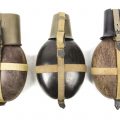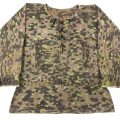Working in the Normandy Victory Museum
In the first week of January, 2023 I was asked to come and assist my good friend Otto (Handpaintedmannequins.com) and Ivo for museum work in Normandy. The work would mostly implement delivering mannequins, rearranging some displays, photograph some items for the reference and creating a back story for the display.


We mostly worked on a display featuring 7 mannequins depicting members of the 9. Kompanie Fallschirmjäger Regiment 6 in the Coutances region during the fighting end July 1944. The museum had many interesting items coming directly from the area which could be attributed to this very unit making it a great opportunity to optimalise the display.
The display was built around a large table. The scene is that of a Gruppe which just returned from a Spähtrupp or reconnaissance patrol. The NCO returns to the HQ with notes regarding American positions and troop movements. The Hauptmann receives these notes from the patrol and draws the enemy positions on the map.
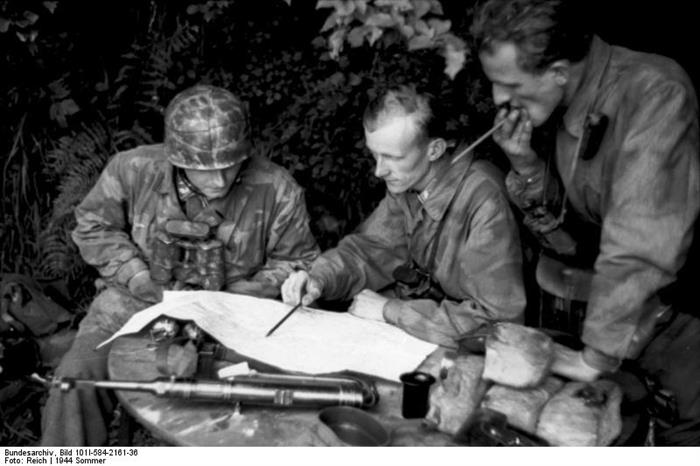
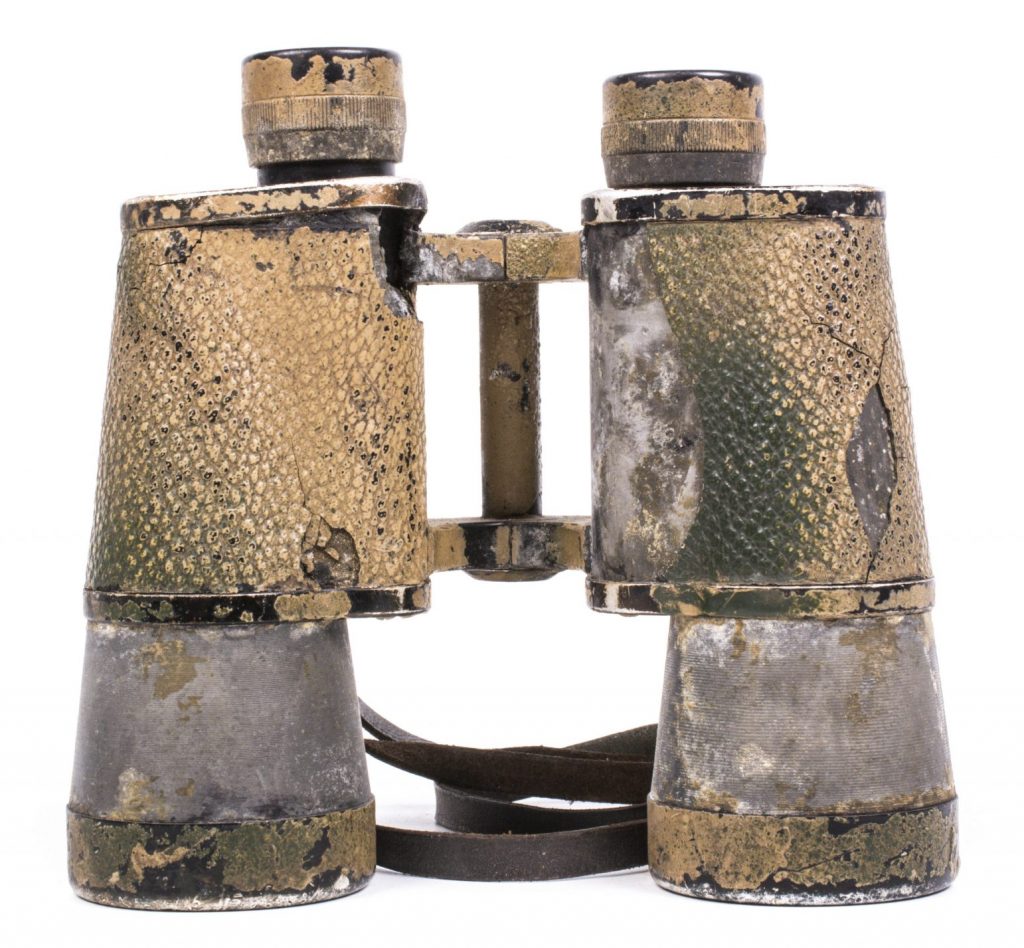
When we started with the display we noted there was a lot of work to do; mannequins had to be undressed, modified and repainted. The standard Rootstein and Hindsgaul mannequins needed shortening as the average soldier wasn’t 190cm tall. So taking in a about 10 cm in the waist really did add some base realism to the display. When we had the mannequins fully undressed the second job was to make sure every mannequin had a logical rank, uniform and equipment setup with the materials provided. I soon noticed that the NCO had a rifle, and the enlisted man had a MP40. We changed this around ofcourse, although all Stellvertreter or a ‘acting NCO’ (a enlisted man who was tasked with taking over the Gruppe when the NCO was occupied) in FJR6 also carried a MP40. But we tried to make the display as logical as we could.
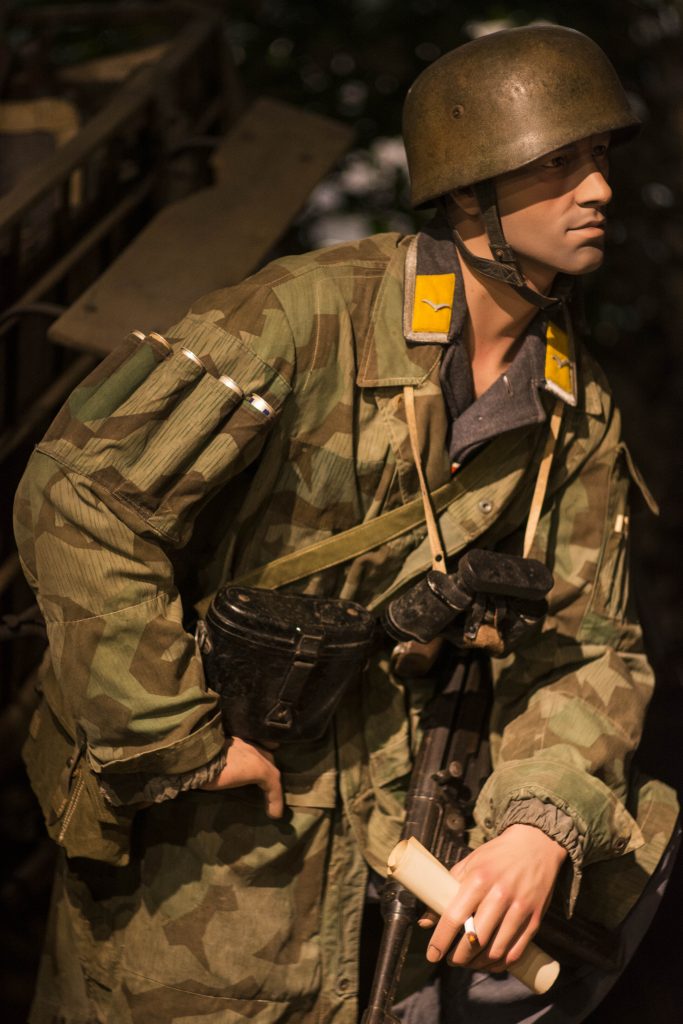
The Unteroffizier depicted in the picture above was the lowest ranking NCO in the German army. This rank was typical for men leading a 10 man group. He is equipped with a set of 6×30 binoculars, a MP40 and its accompanying 6-cell magazine pouch, a camouflaged helmet in the typical camouflage pattern as used by Fallschirmjäger Regiment 6, and a modified smock. The smock started its life as a step-in example in Splittertarn B. It was modified by the addition of pockets for flares on the right sleeve and a improvised mapcase on the left sleeve. The smock was left behind after the fighting in Coutances. The smock was worn by a Fallschirmjäger which undoubtedly got wounded in the fighting as it retains multiple blood stains and period repairs.


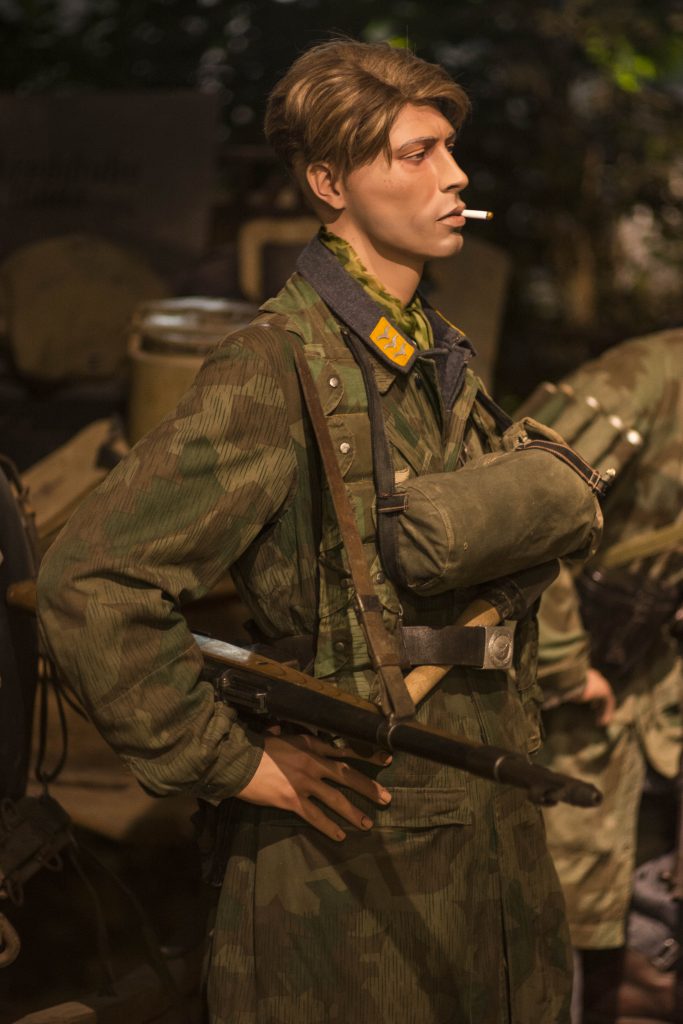
Another mannequin we tackled was this rifleman, equipped with a G41 rifle.
The mannequin is a vintage Rootstein example which usually measures about 190 cm. We opted to shorten its torso by 5-10 cm to make him more eligible for a average size during 1939 and 1945. We also adapted a custom made wig to create more realism in the display. Otto then finished the mannequin by hand painting it with various techniques to perfection.
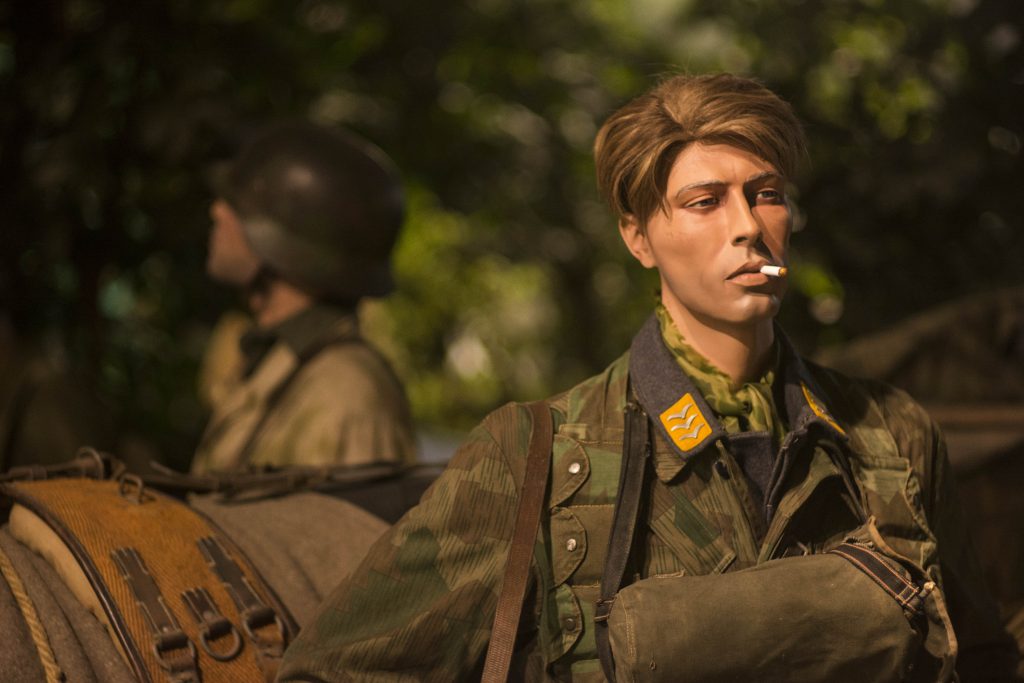
He is wearing a standard Splittertarm B jump smock and a early gasmask bag with black straps. The G41 rifle seems to be the prominent semi automatic rifle with Fallschirmjäger, Waffen-SS and the 21. Panzerdivision in Normandy. Unlike the G43 it was not issued with a magazine pouch but was solely reloaded using the same clips used with the K98.


He wears a scarf of American T-5 parachute canopy material which was typical for the troops who fought in the landing zone of the 82nd and 101st airborne division. During the invasion many of the heavy equipment of the US Airborne divisions was mis dropped and often landed in the middle of German held positions. The Germans re-used these freshly dropped weapons to their own benefit. They used the camouflaged parachute material which was abundant in the region for various purposes. One can see
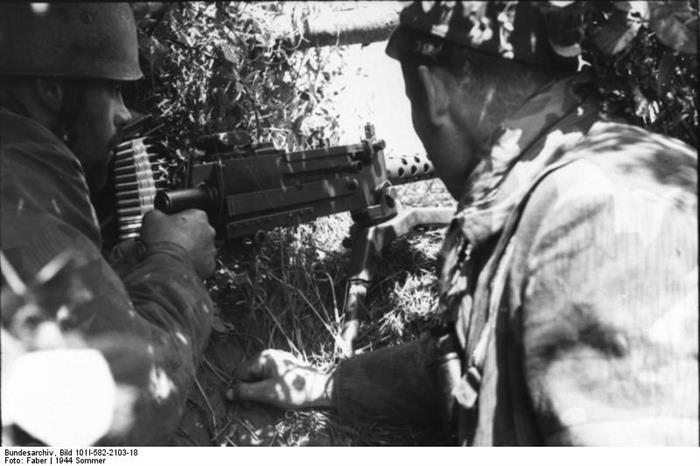
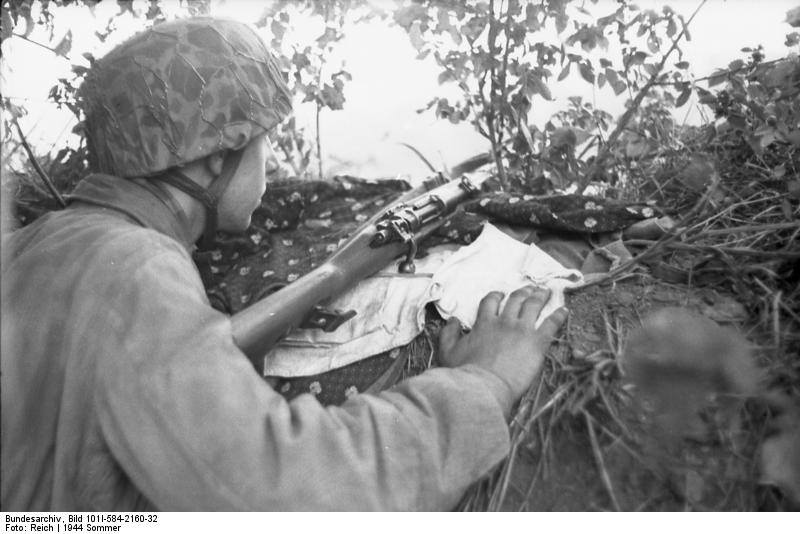
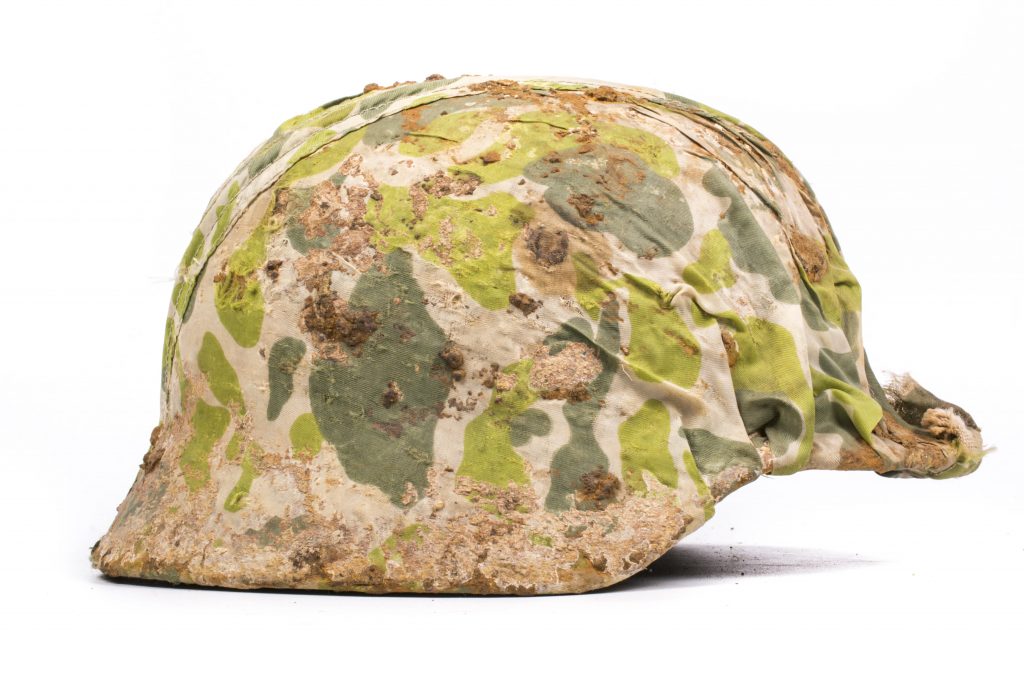

Another enlisted man in the diorama can be seen looking at the sky next to a wooden cart. He is wearing a standard M40 type helmet which was not uncommon within the ranks of Fallschirmjäger Regiment 6. He is also armed with a MP40 as his ‘acting rank’ is that of a Stellvertretende Gruppenführer. The cart is loaded with supplies and ammunition, destined to be redistributed from the HQ.
He is looking up to the sky as the German army was extremely fearful for the Allied fighter bombers which terrorized the German army on the ground in Normandy. This was so bad at some locations that vehicles could only move under cover of darkness. The Germans adapted where they could and camouflaged most if not all vehicles utilizing tree branches, camouflage netting and paint to avoid areal detection.
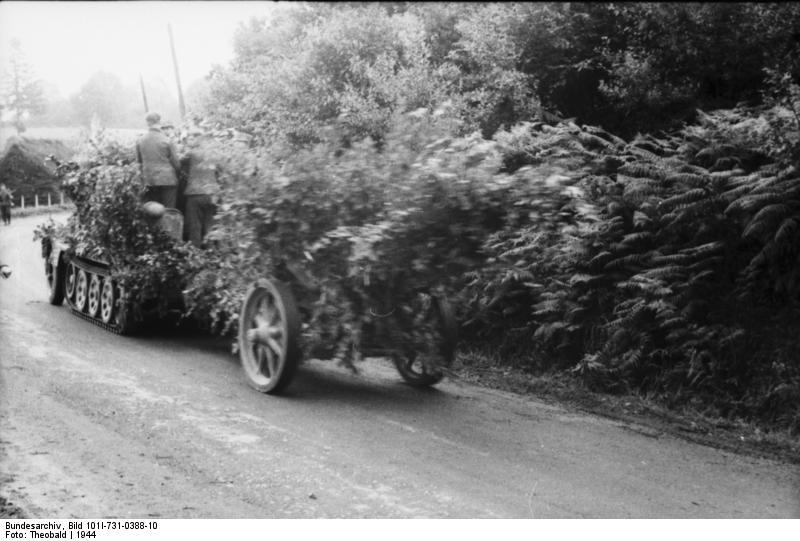
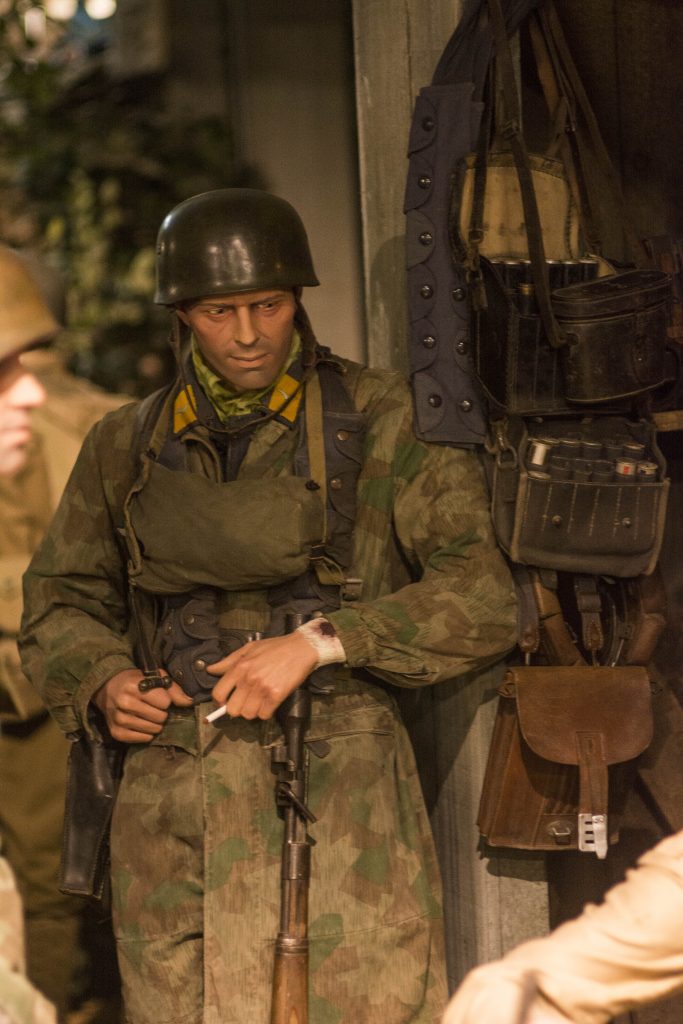
Another mannequin we dressed and added tot the display was this rifleman armed with a K98 with grenade launcher.
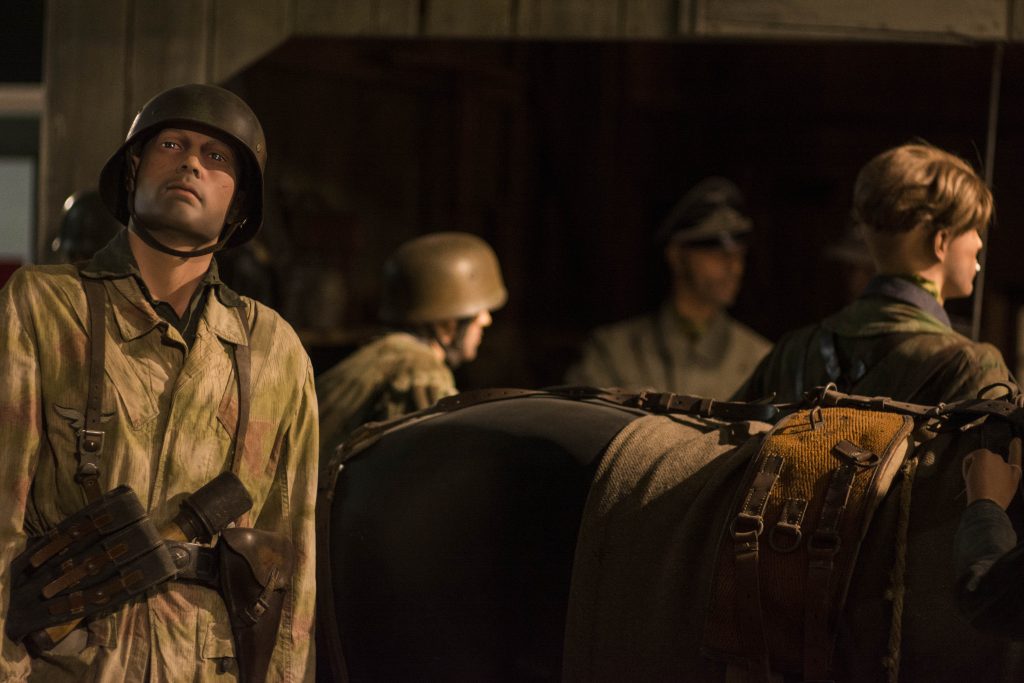

The HQ is ran by a Hauptmann who is a veteran with several years of experience. He’s wearing a early Grünmeliert jump smock which is heavily tailor modified. This was common with the early jumpsmocks; they were a sign one served for a long time. These early smocks were also often shortened and modified from step-in to the later style.
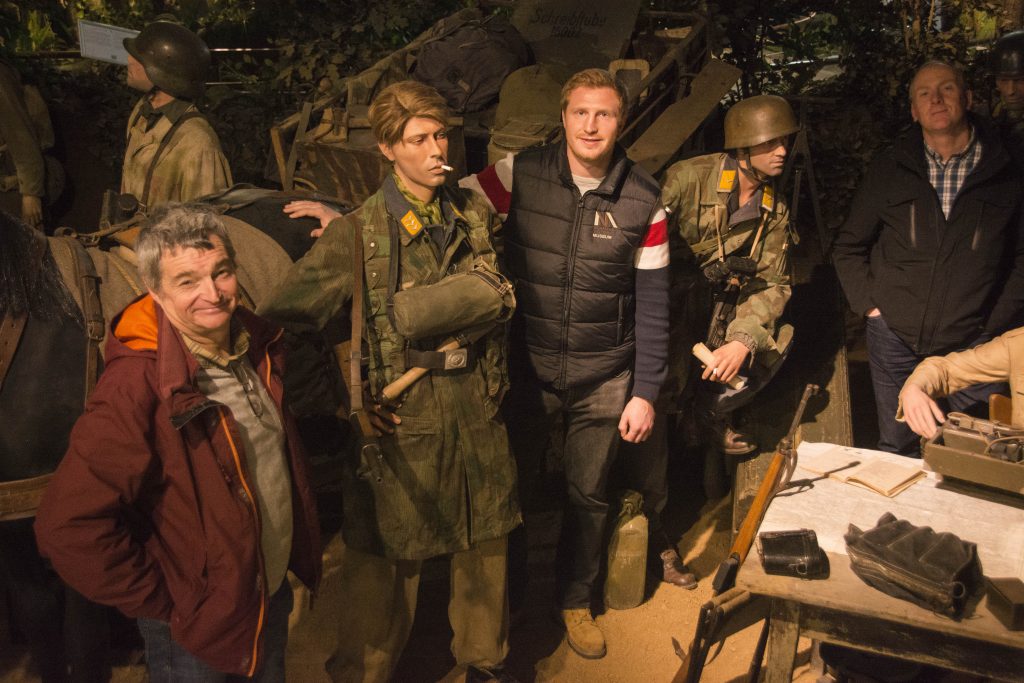


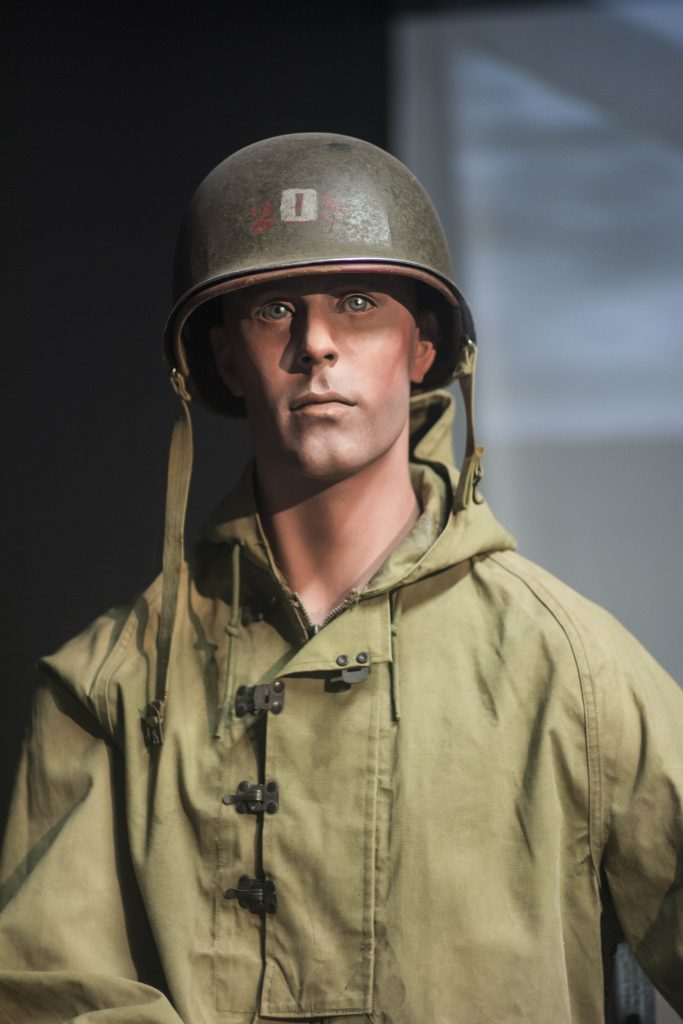
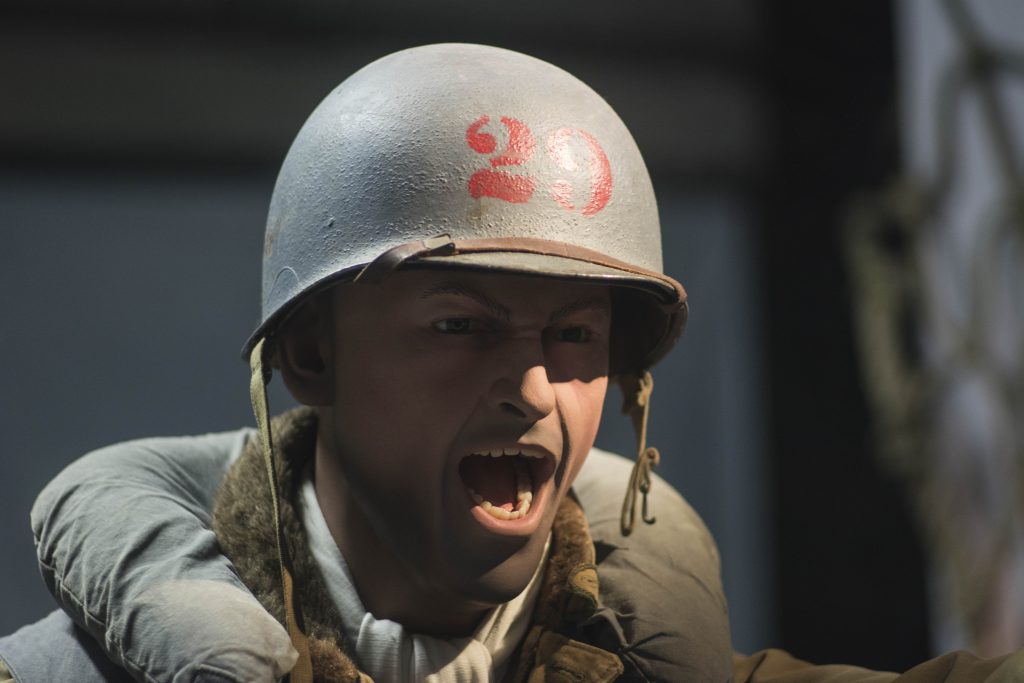
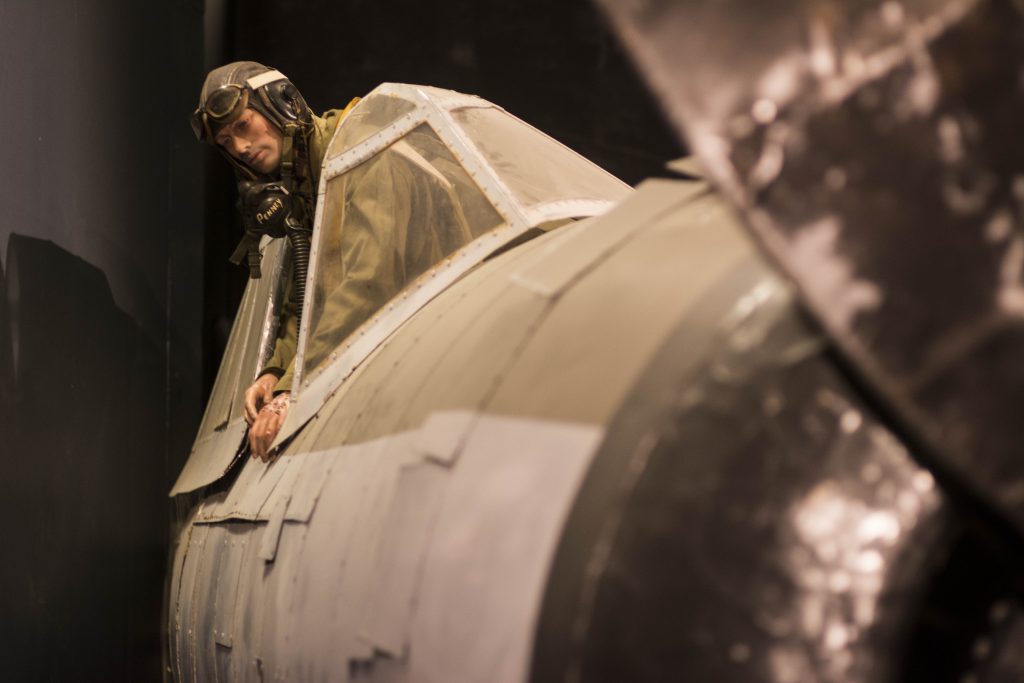
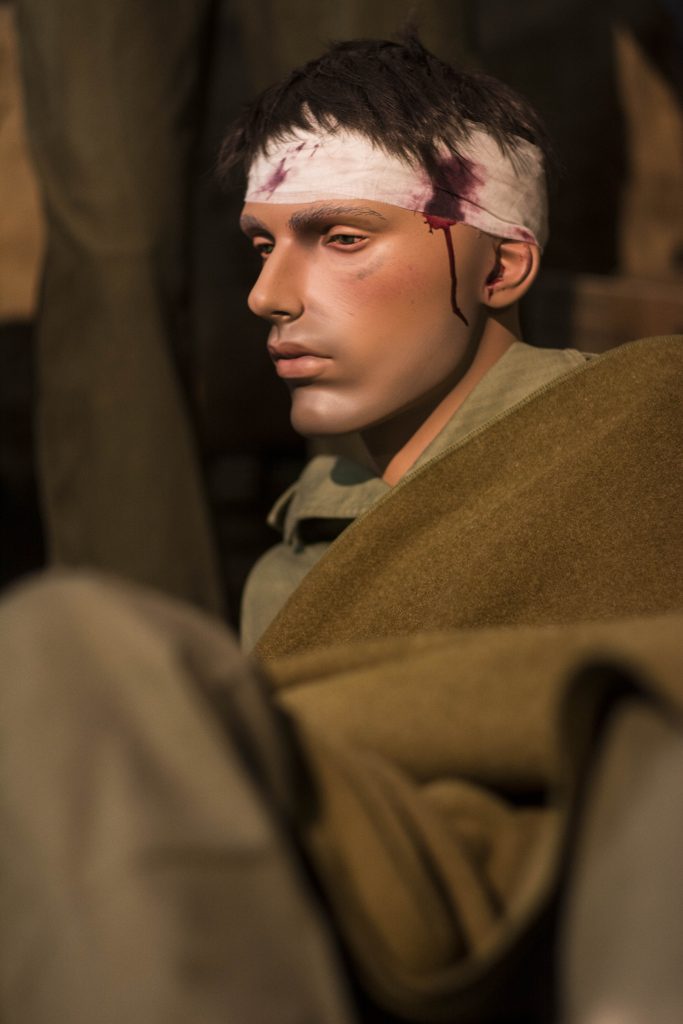

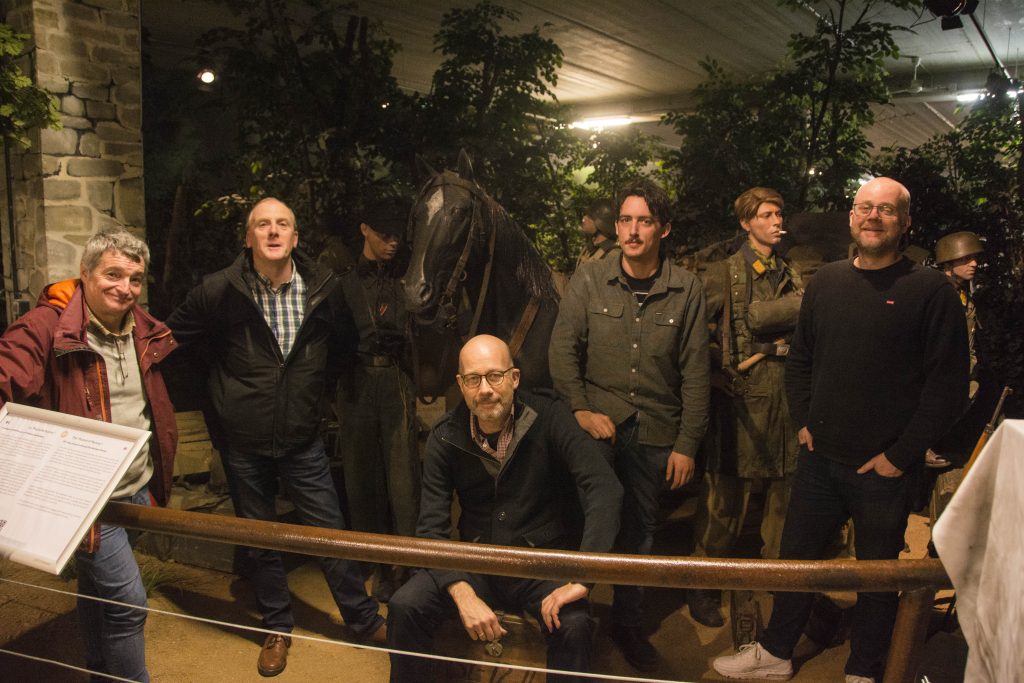
Practical information for visiting the Normandy Victory Museum
The museum is large, there are several life sized dioramas with countless intriguing historical items from all nations to view. There are small, iconic items such as the D-day clicker right to large trucks, tanks and a number of motorcycles. There are many rare relics that were left behind after the Normandy battles which are a must see!
It would take at least an hour or two to go through the museum. The museum is located in Catz which is located next to Carentan and right in the middle of the D-day area. The address is Parc d’activités La fourchette – Catz (click the link to see the directions in google maps). The site is easily accessible and there is a large parking area for cars motorbikes and even bigger vehicles.
More information on the museum can be seen on their website.
Inside the museum is a restaurant called the A10 Canteen which is in the same World War Two theme as the museum. The restaurant has a good selection of French and Italian dishes which I have tested several of in the course of several days. I can suggest the Pizza du Cantal ;-). More information on the restaurant on their website.



